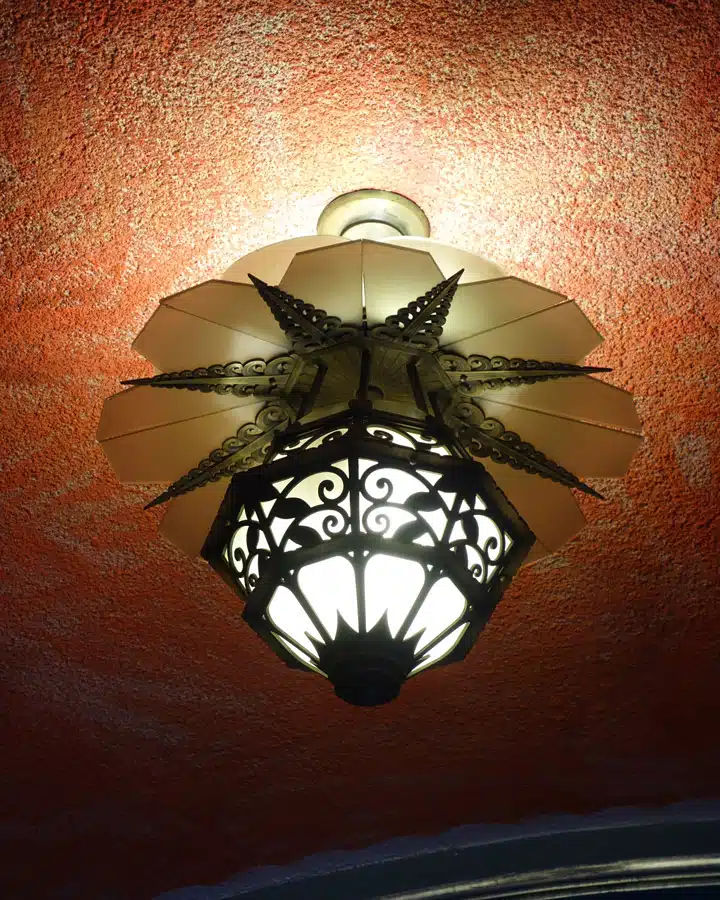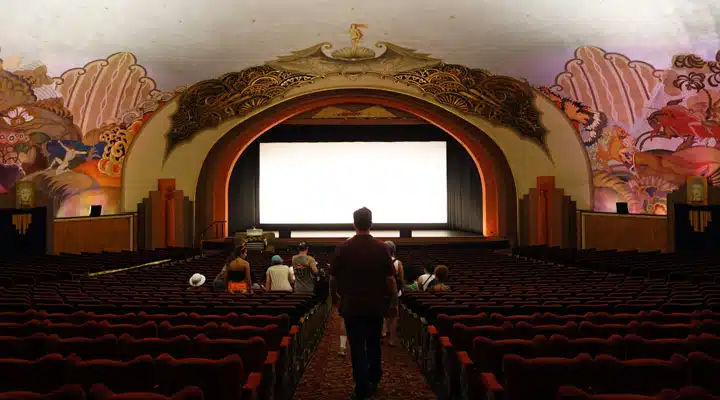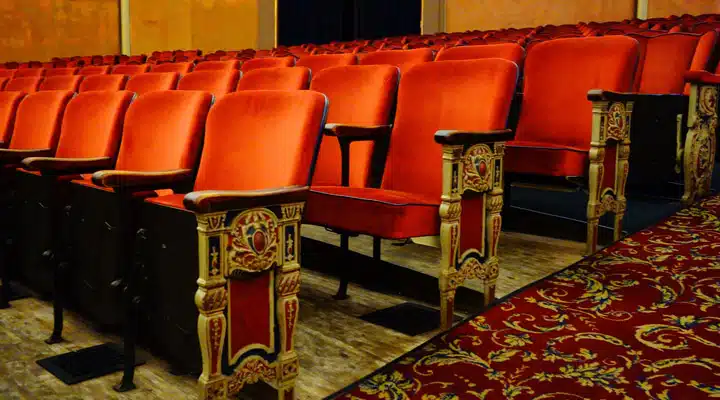Catalina Casino: Avalon’s Crowning Jewel
10/04/2015 | Grace Lennon |

View of the Catalina Casino from Avalon
Every day, the Catalina Island town of Avalon swells with scores of boisterous tourists who come over from the mainland on ferries or helicopters, cruise lines or yachts. No matter what form of transport you take, the, first thing your eye is drawn to is the white, rotund Catalina Casino, jutting out from Sugarloaf Point and dominating the coast line like a gleaming palace. The circular, 12-story Art Deco- and Mediterranean-influenced masterpiece boasts a large ballroom, a state-of-the art theater, and floor-to-ceiling murals by the famous John Gabriel Beckman. Named after the Italian term "casino," meaning “gathering place," this iconic building has attracted tourists and architectural enthusiasts alike for nearly 100 years.

Catalina Casino Exterior
HISTORY
Catalina, a small mountainous island only 22 miles long and 8 miles wide, was virtually untouched until the 1880s and ‘90s, when resort development began with the founding of the Santa Catalina Island Company. In 1919, William Wrigley, chewing gum magnate and the owner of the Chicago Cubs, bought a majority of land from the Island Company and developed the island with an eye toward preservation, simplified beauty and temperate family fun. Two large steamships were put into commission to carry visitors from the mainland, increasing tourism threefold in 10 years; Wrigley built a playing field that would be spring training grounds for his Chicago Cubs. However, the “crowning jewel” of Wrigley’s 10-year development plan for the island was his Catalina Casino.
Casino Advertisement from the 1930s
Architectural Sections and Construction Drawings
Designed by the L.A. team of Sumner Spaulding and Walter Weber, the Casino cost an astonishing $2 million, with construction crews working around the clock to finish the steel and concrete building. Opening to the public on May 29, 1929, the Catalina Casino showcased the first movie theatre to be designed specifically for films with sound (“talkies”) and the largest circular ballroom on the planet. Movie studio tycoons such as Cecil B. DeMille, Louis B. Mayer, and Samuel Goldwyn frequently came by yacht to the Casino to preview their newest cinema productions. The ballroom, due to its expansive dance floor, amazing acoustics and exotic location, played host to dozens of big bands through the 1930s and 1940s. Guests danced the night away to the music of Glenn Miller, Harry James, Kay Kyser and many others over the years. Although the big bands have long faded away, the Casino Ballroom still attracts crowds for celebrations of all sorts. Completely restored just a few years ago, the ballroom retains its original style, plays host to the annual Catalina Jazz Festival, corporate events, weddings and musical performances.
Catalina Casino Ballroom - 1937
ARCHITECTURE
Surrounded by sea on three sides, the large, circular casino dwarfs the tall palm trees located in front. The Casino’s Colonial Revival/Mediterranean design was said to be “built on the principle of the coconut shell," and has a polished white plaster finish with red clay roof tiles. Stylized “ocean-scape” murals, including the famous mermaid rendered in brightly colored tile, towers over the ornate ticket booth. These incredible Art Deco murals were designed by John Gabriel Beckman, already famous for his work at Sid Grauman’s Chinese Theatre. In later years he would become a set director, working on films like “The Maltese Falcon” and “Casablanca.”
Casino Entry
Tiled Art of Casino
Tiled Mermaid Mural by John Gabriel Beckman
THE AVALON THEATER
With seating capacity for 1,154, the grand Avalon Movie Theater boasts an incredible domed ceiling, shimmering with silver leaf stars, and colorful Beckman designed murals on either side, depicting the geography and history of Catalina Island. The theater has its original four-manual, 16-rank pipe organ built by the Page Organ Company, and the projection room has remained virtually unchanged since opening in 1929. The space is extremely well-insulated, to not transmit sound from the ballroom above, and the state-of-the-art acoustical design and sound systems were so impressive that it was studied and replicated by the designers of Radio City Music Hall in New York City. It has a single massive screen and, to this day, still shows first-run movies. Surrounding the theater is an ornate, black walnut-paneled lobby filled with Art Deco furniture, Tiffany lighting and sterling-silver and gold-leaf accents.
Theater Interior
Original Theater Seats
Theater Murals by John Gabriel Beckman l depicting the geography and history of Catalina Island

Tiffany Lighting
Casino Lobby
THE BALLROOM
At the top-most floor of the structure, located directly above the theater, is the lavish, 20,000-square-foot Catalina Casino Ballroom. It is the world's largest circular ballroom with a 180-foot diameter dance floor and has been known to accommodate up to 6,000 dancers. Floated on a layer of cork and inlaid with seven types of precious hardwood the floor helps to muffle the sound of dancing feet so that it will not bother theater-goers below. The ballroom features rose-colored walls, five massive Tiffany chandeliers within the 55-foot ceiling, a raised stage, seating areas and a full-service bar. Large French doors encircle the room, connecting the dance floor with the "Romance Promenade": an open balcony that runs around the building, providing spectacular views of the marina and town framed by the elegant columned arcade.
To reach the ballroom, visitors use the building's two ramped walkways, both enclosed in towers that extend out from the circular building. Wrigley took the idea to use ramps instead of stairs from Wrigley Field, his Chicago Cubs stadium, allowing large numbers of people using the ballroom to quickly move to and from their destinations. Each ramp has a small lobby area just below the dance floor level.
Circular Ballroom
Tiffany Chandelier
Romance Promenade
VISITING CATALINA CASINO
Today, visitors can attend guided tours of the Casino; catch first-run movies in the Avalon Theater; or visit the Catalina Island Museum and Art Gallery located on the ground floor, allowing guests to step back in time to a glamorous era when bands were big and talking movies were the cutting edge of technology!
For more information please visit http://www.visitcatalinaisland.com/activities-adventures/catalina-casino.
All photos by Grace Lennon





























